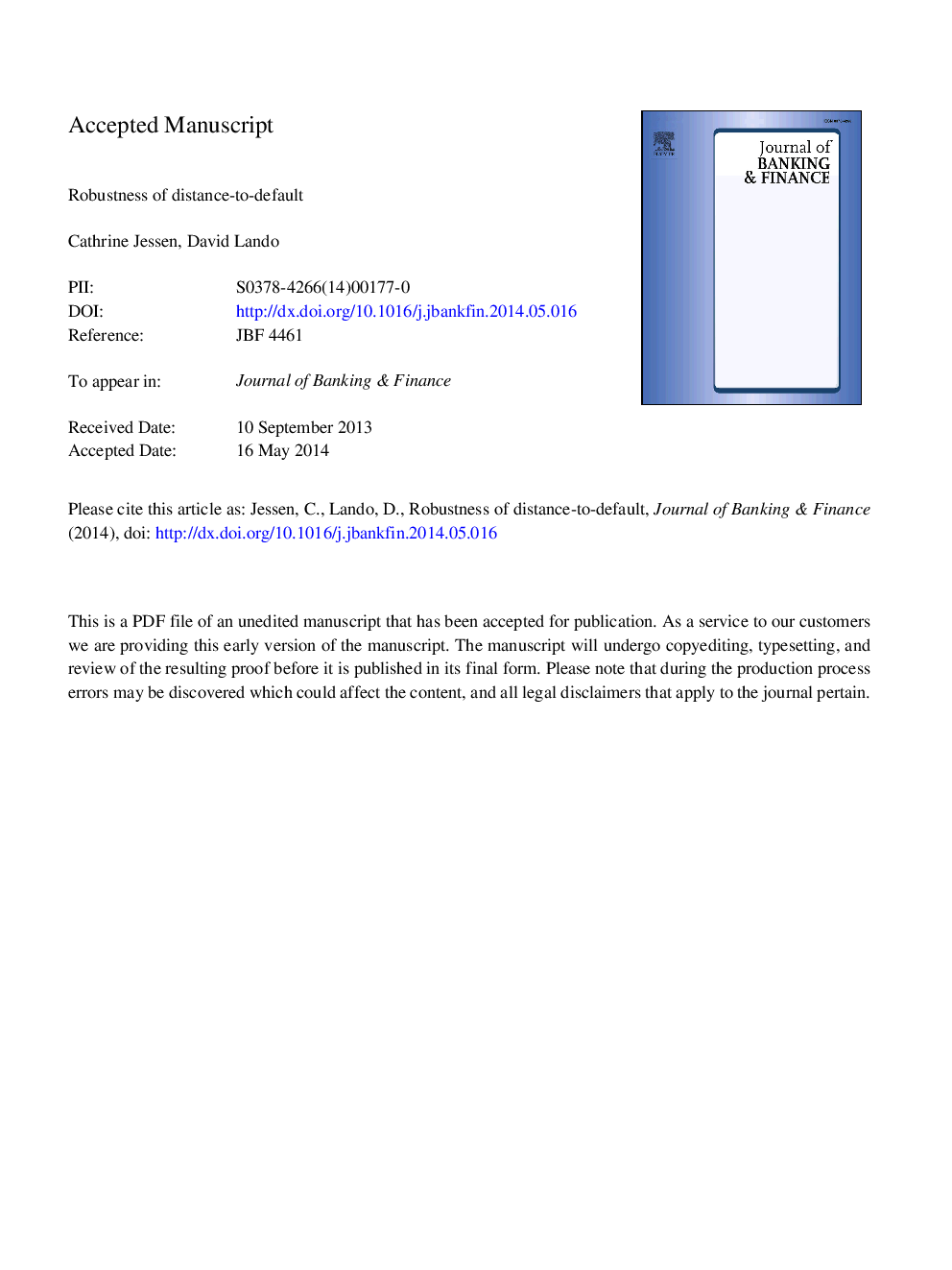| Article ID | Journal | Published Year | Pages | File Type |
|---|---|---|---|---|
| 5088592 | Journal of Banking & Finance | 2015 | 47 Pages |
Abstract
Distance-to-default (DD) is a measure of default risk derived from observed stock prices and book leverage using the structural credit risk model of Merton (1974). Despite the simplifying assumptions that underlie its derivation, DD has proven empirically to be a strong predictor of default. We use simulations to show that the empirical success of DD may well be a result of its strong robustness to model misspecifications. We consider a number of deviations from the Merton model which involve different asset value dynamics and different default triggering mechanisms. We show that, in general, DD is successful in ranking firms' default probabilities, even if the underlying model assumptions are altered. A possibility of large jumps in asset value or stochastic volatility challenge the robustness of DD. We propose a volatility adjustment of the distance-to-default measure that significantly improves the ranking of firms with stochastic volatility, but this measure is less robust to model misspecifications than DD.
Related Topics
Social Sciences and Humanities
Economics, Econometrics and Finance
Economics and Econometrics
Authors
Cathrine Jessen, David Lando,
